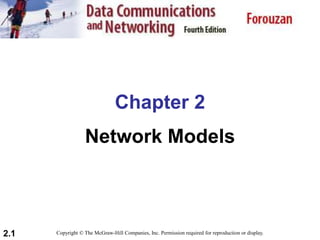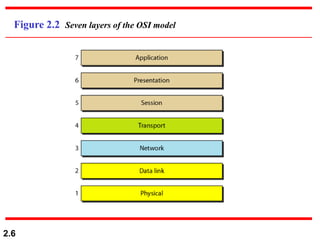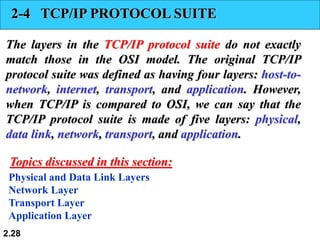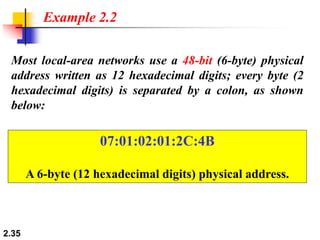The document discusses network models and the OSI model. It describes the seven layers of the OSI model which include the physical, data link, network, transport, session, presentation and application layers. Each layer has a specific function and works together with other layers for communication. The document also discusses the TCP/IP protocol suite and how it maps to the OSI model. Finally, it covers the different addressing schemes used in TCP/IP including physical, logical, port and specific addresses.








































